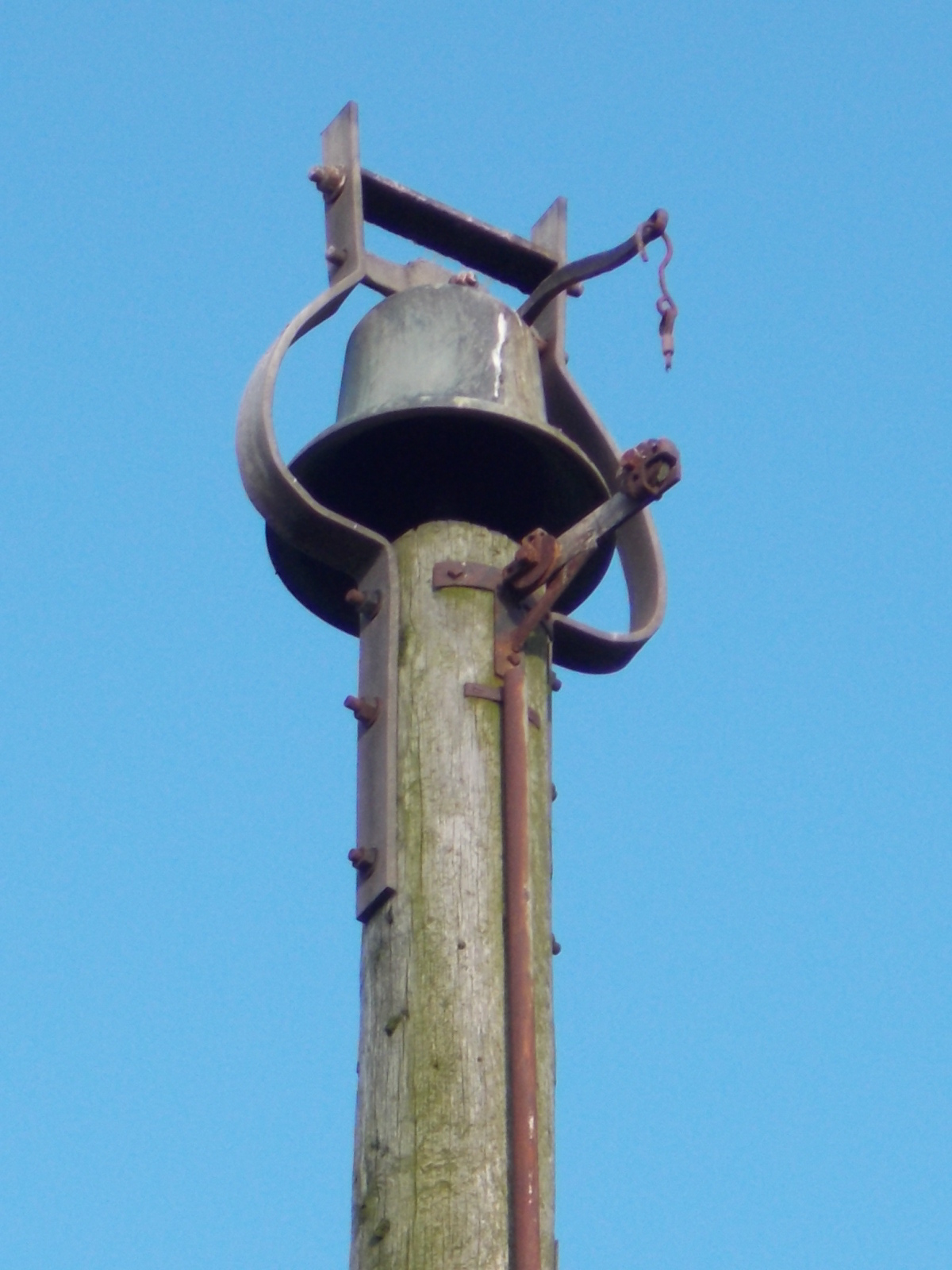The Marshside Fog Bell, and accompanying building, stands today on Marshside Road. It is a reminder of the perils of those that earned their living from the sea. Today it is a memorial, but in the past it had a very clear purpose – to guide lost people back to safety when fog prevented them from knowing in which direction the shore lay.

The decision to erect a bell and bell ringer’s hut was prompted after a tragedy that occurred on 26th January 1869. Seven local men were out collecting shrimp and on their return home got lost in heavy fog. With no sense of which way the shore lay, they were caught by the incoming tide and all were drowned.
The men were ‘hand putting’ for shrimp. Working without a boat, they would have trudged up and down the beach and sand banks with their large shrimping nets. The nets were put under the surface of the sand and pushed along as they walked, trapping shrimp in the process. A modern photograph of this method can be seen on the IFCA website (towards the bottom of the page) here.
Author E. Bland in his Annals of Southport names the seven men as Peter Aughton, Robert Wright, John Wright, John Rimmer, Peter Wright, William Hesketh and Peter Wright (this list has two men both named Peter Wright). A subscription was raised for financial relief for the widows and orphans. This was ‘The Marshside Calamity Fund’. The money was invested and the fund paid out for 20 years. Soon after the accident, a fog bell and wooden hut for the bell ringer were erected. These originally stood near the site of Marshside Primary School, but two years later a storm destroyed them. The building and bell were presumably repaired and rebuilt.

The fishing community set up the North Meols Fishermen’s Provident Association in 1877. In 1889, the association decided to re-site the fog bell, moving it to its present location on Marshside Road. They also appointed a new bell ringer. This was John Latham and he was paid five shillings a week. The brick building we see today was also used to house a weather station, equipped with an anemometer (to measure wind speed). The station operated until 1959.
On January 29th 2012, North Meols Civic Society held a commemorative service. Wreaths were laid by Jenny Houghton and Lord Ronnie Fearn, both descendants of two of the men that died in the tragedy. The society stated that they wanted to open the building as a small museum and they appealed to bricklayers and joiners to come forward to help with this scheme. Nothing seems to have happened in the decade that followed, but in 2023 restoration began.
The building had been owned by One Vision Housing, who have now transferred ownership to North West Heritage CIC (a social enterprise). Their hope is to transform the building into a micro museum, focusing on local coastal life, in particular life-saving endeavours and fishing. They have received an Everyday Heritage Grant from Historic England, which aims to raise awareness of working class history amongst the public. Whilst this grant of £6000 is welcome, none of it can be spent on refurbishment of the station. A separate fund raising attempt has been put in place to do this, with North West Heritage hoping to raise £2000. If you would like to donate, click here.

Visiting the Site Today
Visitors today can see the fog bell on top of a tall pitch pine pole. Inspection with binoculars will show the mechanism whereby the bell was rung by a cable, and the sleeve that would have protected the cable running down the pole. The brick-built building beneath is a squarish block with a flat roof. A small extension was added to the back of it at some point. On one side of the building there are two blocked doorways, and on the opposite side two blocked windows. On the front is a stone plaque that states ‘Rebuilt by John Geddes 1896‘.
At the beginning of 2023, the first phase of restoration began. Inside, the fisherman’s bench and fireplace were found to be still intact. The bricked up door has been opened and a new frame fitted. The bell ringing mechanism has been restored, so that once again the building has a working bell.
On the 30th January 2023, a ceremony was held to commemorate the life of John Wright, who recently died aged 92. At age 15. in 1945. he took over from the designated bell ringer, who had become exhausted from ringing during a thick fog. John continued to ring the bell for over eight hours.
Site visited by A. and S. Bowden 2020. This page updated 2023.
Access
Park at RSPB Marshside Carpark. There is a small charge and you can only pay with a debit or credit card. Cross over Marine Drive and head down Marshside Road a short distance. The Fog Bell and its associated building are on the left.
Nearby
Early Transatlantic Flights, via Southport
References
Annals of Southport and District: A Chronological History of North Meols from Alfred the Great to Edward VII, E. Bland (1903) J.J. Riley. Available on the Internet Archive (archive.org).
The Lancashire Nobby: Shrimpers, Shankers, Prawners and Trawl Boats, Nick Miller (2009) Amberley
champnews.com/newsstory.aspx?story=3022922
nw-ifca.gov.uk/managing-sustainable-fisheries/shrimp/
seftoncvs.org.uk/tag/fernley-observatory/
gofundme.com/f/help-restore-the-marshside-fog-bell-building?qid=6fd43e7d681fc02abb60900438671a8e
liverpoolecho.co.uk/news/liverpool-news/seven-tragic-deaths-lead-local-20735488
twitter.com/nw_heritage
standupforsouthport.com/marshside-fog-bell-to-become-new-micro-museum-dedicated-to-1869-southport-fishing-tragedy/
Comments are closed.